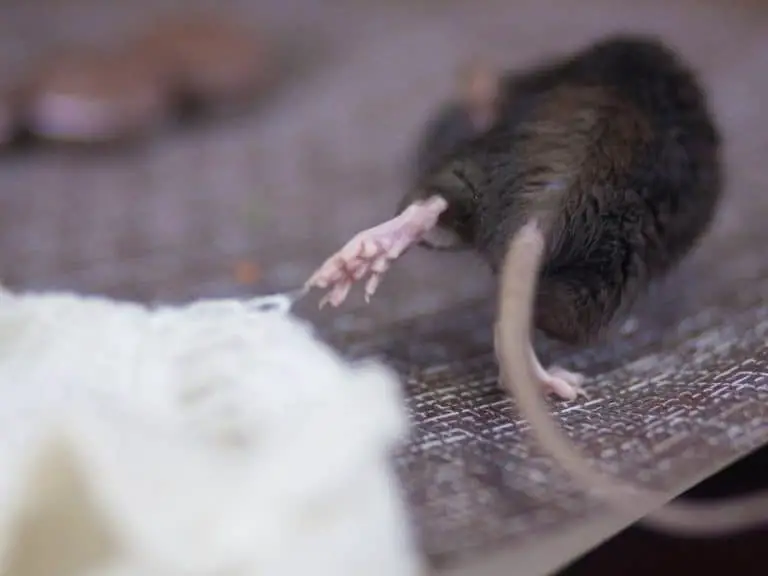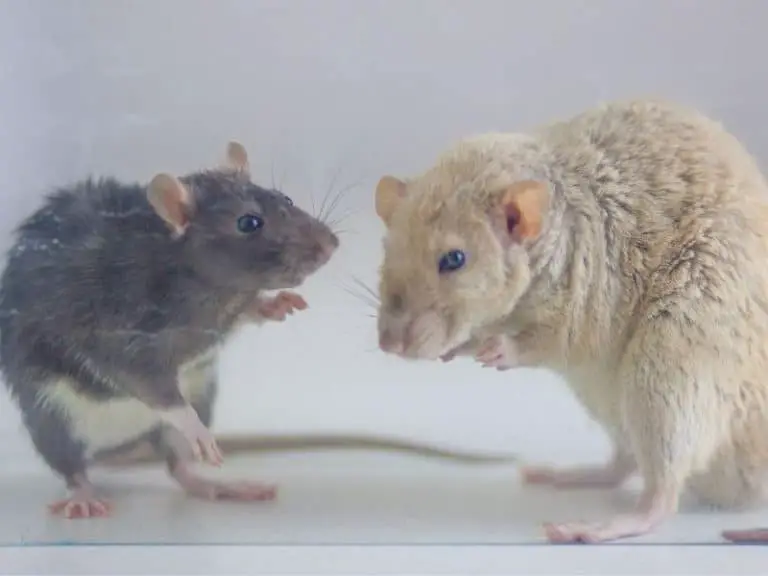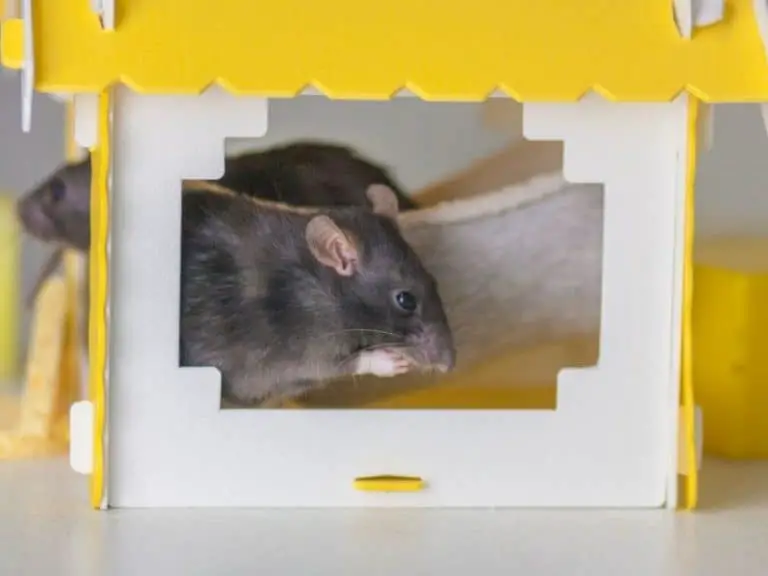Complete Guide to Catching a Smart Rat
Having a rat or pack of rats living in your house can be distressful and sometimes make you feel ashamed when someone visits your home. These not so tiny creatures are known to be intelligent and notorious; therefore, planning for a trap can be challenging.
If you feel distressed, especially by a smart rat, who can decode your every trap attempt, some strategies can help you.
When catching a smart rat, the best approach is to employ multiple trap methods to increase the odds. Make sure to use gloves when setting the trap bait to hide the human smell. Also, consider using tracking powders and video cameras to find the common rat pathways.
Before we go into details that include the step-by-step approach to eliminating these notorious rats, let us first understand their behavior and the common types of smart rats so that we can execute the trap successfully and more effectively.
Understanding rat’s behavior
Let’s face it- rats are hard to kick out of the house since they do not fall to the usual traps. Rats are known to be smart rodents with a superb sense of smell, sound, taste, and touch.
They roam on their path carefully, adapt to their surroundings quickly, and learn new tricks, which helps them survive.
In some studies, it showed that rats have a better cognitive learning ability than humans. Well, thanks to their neophobia trait or the fear of something new or unfamiliar that helps them survive better than other species.
That is why it is tricky to bait rats because placing peculiar traps might fear them since it’s their first time seeing or encountering the trap you set.
Besides, rats have many experiences that help them escape in the shortest possible time using the nearest available route. So, if you find it hard to catch them in action, it is because of this behavior.
Rats are innate and smart; therefore, they will not roam carelessly in open territory. You will not find them wandering in places with accessible food or traps like mice. Instead, they will just observe first if they find something new in their territory.
That is why placing a trap will make them suspicious, so they will not go near it. Even the food you will bait will take a small bite of it first before consuming it all at once.
Most Common Types of Smart Rats
It is a perfect idea to know your enemy and its behavior before carrying out your rat trap with some bread and cheese crumbs. Depending on where you live, these are the two main species of smart rats you may encounter:
Roof rats
From the name itself “roof,” these rats are usually spotted on the roof, trees, or attic. They are commonly colored black and brown with big eyes and ears and a long scaly tail that is bigger than their body.
Roof rats are omnivorous and practically eat anything available to them. They are said to be fussy eaters, and they prefer to munch on seeds, fruits, grains, nuts, and berries when in season.
A large part of their diet is feeding on slugs and snails and some insects such as cockroaches.
Sewer rats
Sewer rats are also known as Norway rats. These rats are usually found in the basement and the sewer. They typically have brown colored bodies and have shorter tails.
They have flexible eating habits and will feed on anything available, ranging from raw meat to leafy vegetables.
How to Catch a Smart Rat
Rats are indeed smart, which they tend to be; hence you need to be smarter. In fact, several factors make them difficult to catch:
- Rats need proper bait.
- Rats have this neophobia behavior (fear of something new)
- Rats roam very carefully.
- Rats are smart and learn things quickly. They learn from past experiences with rat traps or witness other rats being trapped or poisoned, thus sharing this information with other rats. That’s when you hear squeaking sounds(it’s a rat’s way of communication with one another)
If you want to catch smart rats, you need a well-planned and thoughtful approach. Knowing the types of rats and their behavior will give you a great kick start in carrying out your plan.
To make it more detailed, here are is a guide that may help you:
Make the rat trap a safe place
The idea is to make the rat trap a familiar place for the rat. The trick to catching intelligent rats is to make the trap safe. To make it possible, keep several unarmed rat traps in the house to create a safe and familiar place for the rat to go in and eat.
Place food around and inside the trap, make sure that the rat thinks of it as harmless for a day or a couple of days before carrying out your trap plan.
When rats encounter a new food, they will inspect it first and then eventually take a tiny bite by stretching their neck before leaving. If fresh food does not cause any harmful effects like illness or aches, the rat will return and eat more.
In addition, there are certain rat colonies that use the test-and-attack technique wherein a small and naive rat will be sent to test the food source. If the young rat is unharmed after eating the food, the rest of the clan will believe that the new food is safe to eat.
Wear gloves when handling rat traps
When setting up a rat trap, wear gloves, and apply the bait using kitchen utensils. The reason for this is simple. Rats are generally cautious of human smell, and they can easily detect it from the oil left on the fingerprints. If you accidentally touch a rat trap with your bare hands, wash it off with warm water before setting it up.
While fingerprints are not proven to alter the trap’s effectiveness, your chances of catching the rat will increase since your scent from the trap is absent.
Hide and Disguise Rat Traps
Another tip to catch smart rats is through hiding the traps themselves. To do this, set up a safe-looking feeding area by placing an unarmed trap inside an empty cardboard box and then covering it with sawdust.
Leave a trail of food that leads inside the box and a chunk of food placed on the top of the trap’s trigger.
Once the rat becomes used to going inside the box for a food source, you can now set up your trap. You can be more creative to think of other ways to disguise traps and finally catch the smart rats, such as painting the trap that will match the floorboards.
Remove Other Sources of Food and Water
Rats will not move or touch an unfamiliar object if they have sufficient food and water in their place.
However, if you eliminate the food from their usual spot of access, they will be forced to move and look for a different place with food, and that will quickly get over their neophobic behavior. In this scenario, the rats will have no choice but to try the food on the bait.
The same goes for water.
While mice do not require an open source of water, rats do. Whether it’s a leaky pipe, stream, or water in the sink, if their water source is eliminated, the rats will be attracted to a trap with liquid bait, so why not set up your lure near the sink pipe?
Think of all the possible places where rats are getting food to make sure you eliminate all the potential sources, even for just a couple of days.
Don’t just think of your pantry since rats may also be taking food from your pet’s dish in the middle of the night or getting a consistent source of nuts and grains from a nearby bird feeder or someone with crops.
Use the Right Bait
Reduce the rat’s neophobic behavior by offering one of its natural foods. American cockroaches can be tied up to the rat trap for Norway rats using a string of dental floss.
While for roof rats, few snails or snail shells are also tied up to trigger rat’s response has been proven effective.
Just in case you are not aware, certain foods are proven to help in trapping rats better than others. Here is a rundown of the most common food baits you can pick up at any grocery store or found in your kitchen cabinets.
Cheese
Conventional yet effective, strong-smelling cheese can attract rats always. You may add into some cracker with butter spread on it, and see how it works. However, take note to avoid roof rats’ case since they prefer raw meat and leafy vegetables than cheese.
Peanut butter
Rats cannot resist the taste of peanut butter, and just like humans, they prefer the thicker, creamier, and crunchier version than the usual one. Also, peanut butter is the most commonly used when covering poison bait.
Meat
A chunk of cured meat, fish, or chicken can be an excellent bait to catch sewer rats and sometimes even roof rats. Keep using this bait for a couple of days until the rats feel safe and comfortable in the area. You can use leftover scraps from dinner when it comes to meat for baiting rats.
Dried fruits and nuts
Rats love dried fruits and nuts. A bag of trail-mix from Walmart will get the job done. Just sprinkle a little amount of these goodies with rat poison or carry out with traps.
Chocolates, maple syrup, or anything sweets
Like humans, rats have a sweet tooth, too; therefore, they will be attracted to sweet smells such as honey, jam, candies, chocolates, and even sugary cereals. Just like with peanut butter, sweets are easy to mask rat poisons and baits.
Leafy vegetables and fruits
If root rats are pestering your house, it is best to bait them with fresh vegetables and fruits. Please place them in conspicuous locations such as roof, attic, or any spaces where they can crawl if they happen to have a bit of vegetable with poison powder or a trap surrounded by fruits, Bingo! You catch these intelligent rats in an instant.
Use tracking powders
Catching groups of rats may sometimes require a creative and professional approach. Just like what you do when planning a business, create a plan, analyze, and execute strategically.
Before you start carrying out your trap bait, make sure to monitor the rat’s activity by using tracking powders. Tracking powders are readily available on hardware, which is labeled to be used for rat tracks. To track the rat down, pour the powder on suspected areas or burrow openings to monitor the rats’ activity.
Install video cameras
Install cameras that can be placed on areas where rats are most likely to roam around. Ensure that the camera comes with a wide-angle lens and low lighting options so that the rats won’t quickly notice the installed camera.
Recording the rat’s activity on a camera will give you an idea about the rat’s behavior and help you know where to set up the rat trap.
Use as many traps as possible
If you think that your problem is just a single rat, you will solve the problem using one or two carefully placed traps. However, if it’s more than one rat, you probably need a dozen rat traps around your house.
The problem can also manifest outside your houses, such as in the garage or the backyard, making your property less inviting. To prevent rats from roaming around these areas, tightly seal away your garbage, rake fallen leaves out, and keep firewoods at least one foot above the ground.
Do’s and Don’ts for Trapping Rats
Rats are very suspicious of new things, and they are intelligent enough to learn things quickly. That is why setting up rat traps need meticulous planning and strategy; otherwise, it will be a total failure.
As a reminder, here are some of the dos and don’ts for trapping rats:
- Do not use poison powder as a bait in a rat trap. Using poison does not make traps effective. In fact, it will just introduce health risks to pets, especially if you have a toddler in your home.
- Reuse rat traps. The scent left by the rat caught in the trap will not discourage other rats from the trap. Instead, they will be more attracted to the trap since they smell a familiar scent.
- Be patient when placing traps. Rats may not approach the trap a few days after it was established (because of their behavior). As long as the bait is correctly positioned in the trap, you can leave the trap for several days or weeks.
- Do not handle traps with bare hands. It is best to set the bait on the trap while wearing gloves or using kitchen tools or utensils instead of your hands. The human scent on traps can push back rats from the trap.
- Set up multiple traps. Place a single trap in more than one location to increase the rat encounter on the trap.
- Do not place traps where children or your pet are most likely to contact the trap. Make sure to keep traps out of living areas or to storage rooms. Otherwise, you can close the door and warn the children to stay away from rat traps areas. Be careful when setting traps outdoors since wild animals or pets can easily ruin it.
Trial and error approach
It is possible that even if you pour out your utmost efforts, you can’t still get a hold of the rat. Now is the time to analyze and reinvent your plan. You may consider changing the location of the trap; maybe it wasn’t noticed. You may place it on open areas such as furniture, walls, or areas visibly seen.
Installing a sharpshooter is said to be one of the most economical approaches that can help in tracking the rat.
Be patient
It can take several days to a week to catch an intelligent rat. You need to be patient and follow these proven techniques without making a mistake like switching the bait, arming new traps, or using fast-acting rat poison bait, which is more likely to shoo away other rats than kill them all in one shot.
Takeaway
Catching smart rats may take more time than you expected; however, you need to be patient and track it. A young rat, as bright as they are, may take days to catch. But, an older and more clever rat can take up to weeks to trap it successfully.
Studying all the various methods and techniques of catching, preventing, and deterring rats may significantly increase your chances of trapping smart rats. Just stick to your trap tricks, and you will be good to go!
Also, don’t forget to check our tips for rat control.
Photo credit: ©canva.com/ImageSource
Medical Disclaimer: TheHomePestControl is a digital publisher and does not offer personal health or medical advice. The contents of this website are not intended to substitute for professional medical advice, diagnosis, or treatment.
Affiliate Disclaimer: As an Amazon Associate, I earn from qualifying purchases made on our website. If you make a purchase through links from this website, I may earn a commission at no additional cost to you.






